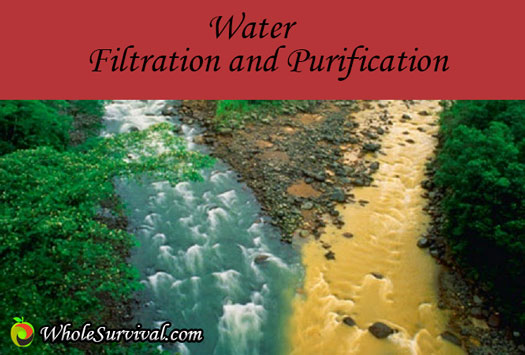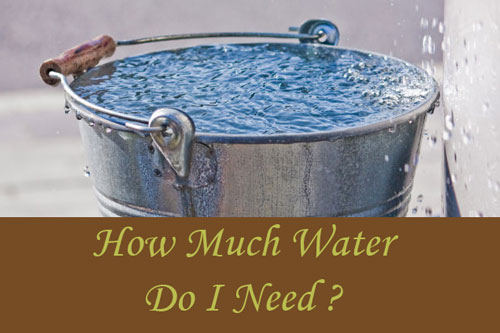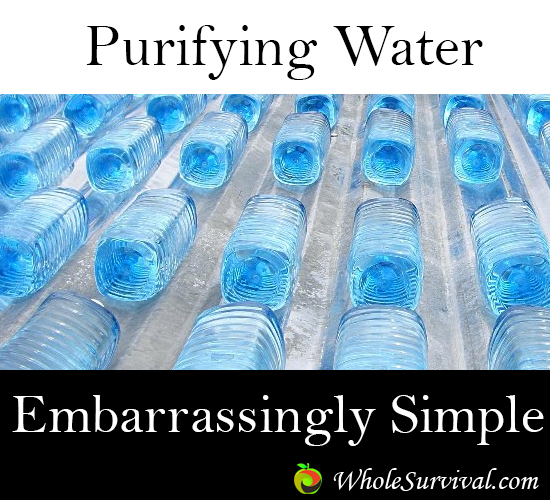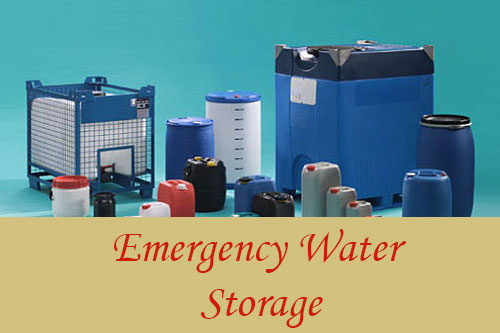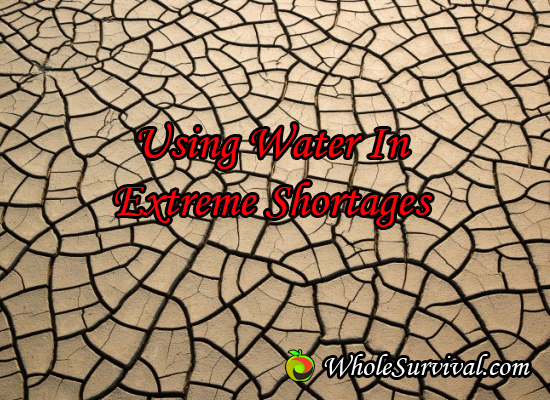What’s The Difference Between Purification And Filtration
If you are just starting out with your water storage and preparedness, you’ll notice that there’s lots of information and products concerning water purification and filtration.
Although both processes remove contaminates from the water, they are not the same and should not be used interchangeably, although they often are.
So in this article I just wanted to cover some of the basics of what the differences are between the two, and when you are most likely to use one or both of these methods to clean your water.
What Is In My Water?
There are basically five kinds of contaminants in water sources that you may encounter:
- Dirt/Sand
- Biological Organisms
- Heavy Metals
- Organic Chemicals
- Inorganic Chemicals
According to the EPA Water Contaminants Guide, there are a few other rare ones like radioactive particles, but I wouldn’t be much concerned about that. As for chemicals and heavy metals, they may be difficult to remove so it’s best to avoid any water source that would contain this kind of hazard. Water sources like rain and streams away from urban areas would most likely be clear of chemicals for example.
Water Filtration
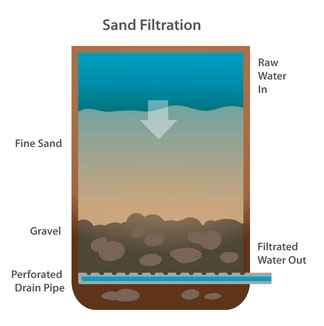
Filtration is the process of removing physical impurities from the water. The simplest example of a filter would be to pass the water taken from a stream through a fine mesh like a cloth to remove the sand and other sediments. This takes out the actual particles of ‘stuff’ that is in the water.
Now, filters have become much more sophisticated than this, to the point where filter systems are able to remove actual bacteria from the water. Not because the filter is killing the bacteria, but because the filter has such small pores that the bacteria cannot pass through. Viruses however are too small for the typical kind of filter to remove.
The image shown here is a simple example of a sand filtration method, where water is poured into the top of the container and by gravity it passes through layers of sand and gravel. The sand filters out the particles and even some harmful bacteria. Additional elements can be added like a charcoal or carbon layer to remove chemicals as well.
Water Purification
Purification may or may not involve filtration, but will also add the additional element or removing or killing off the viruses. Examples of purifying water without filtration would be boiling, exposing the water to ultra-violet light, or adding iodine or bleach (chlorine) to the water. Notice that in these cases you are killing off the micro-organisms, but you are not removing particles. In fact, boiling water actually concentrates the amount of physical contaminants as water is lost to evaporation but the impurities are left behind.
Regardless of your water source, water purification will be a necessary step. Drinking water that is purified but not filtered may not be pleasant if there is sand grittiness for example, but it won’t have the more dangerous elements of harmful bacteria and viruses that could make you very sick.
Is There A Proper Method Of Cleaning Water?
So, there are really three basic procedures to filtering and purifying your water. Each one of these methods can be explained in much more detail, but this is just a summary to help get the point across.
- Filter it to remove particles, then boil it to kill everything. Boiling takes more time and energy, and can give water a bland taste.
- Pouring the water from a clean container to another clean container will reintroduce oxygen that was lost to boiling and make it better tasting.
- Filter first, then purify by treating with an iodine or a chlorine product. That however can leave an unwanted chemical taste.
- Letting the water stand for a while will allow to chemical smell and taste to dissipate somewhat.
- Treat the water with an iodine or a chlorine product to kill micro-organisms, then filter it to remove particles and the chemical taste.
So that’s the basic theory behind cleaning water. The practical part of actually doing it can get much more complicated. The dirtier your source water is, the more complications and steps you will need to take to make the water potable.
What Should I Look For When Purchasing A Water Purification System?
Ultimately, if you are thinking of purchasing a water system, there will be many options available. Fortunately, with a high quality system, you won’t need to wonder too much about the difference between filtration and purification, as both will be taken care of at the same time.
But since both terms do have some overlap in their meaning, you will find that companies selling these water systems may be using the terms interchangeably. Some might say purification and others might say filtration, but both products may produce the same exact result. Since this is the case, you will need to look into the details of the filter to see what is being cleaned.
Some of the major criteria to be aware of would be:
– Pore size (what is the smallest element that gets removed)
– Filter material
– Filter element cleanable and/or replaceable
– Cost of system and of replacement cartridges
– Portability
– Time (How long it takes to produce clean water)
Again, many of the items on that list could take an entire article to go through.
So, that’s about it. Hopefully you now understand what the difference is between two water cleaning methods.

